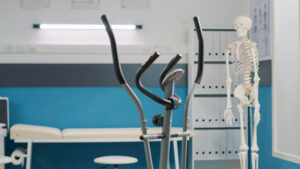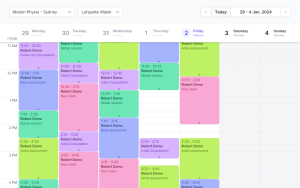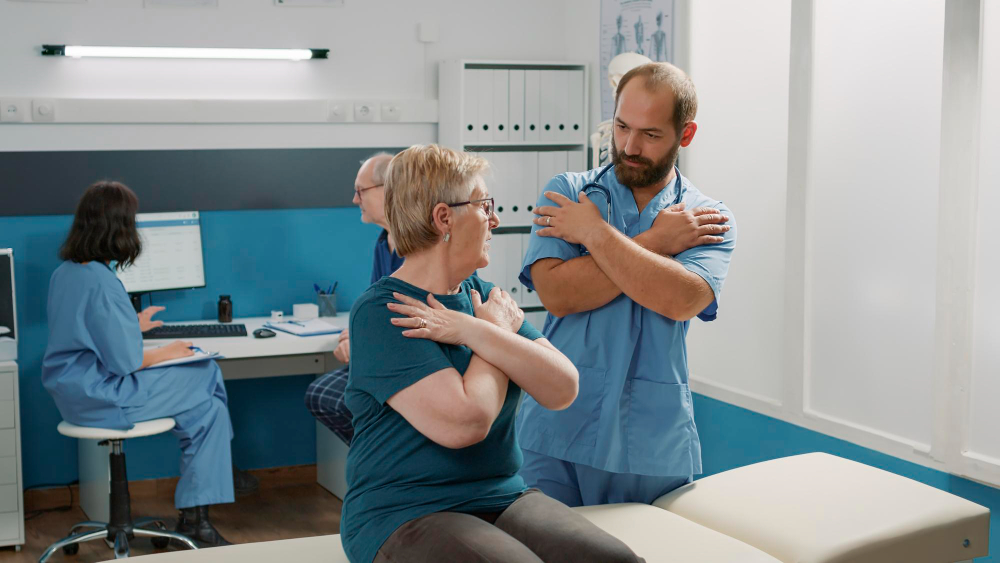Starting an osteopathic practice is an exciting venture that requires careful planning and adherence to various regulatory, financial, and logistical considerations. This guide provides an overview of what is required to open an osteopathic practice in different countries, alongside strategies for attracting your first customers, essential equipment, optimal locations, and the importance of booking software.
Table of Contents
Details
1. Regulations for Osteopaths
1.1 Australia
1.2 Canada
1.3 United States
1.4 New Zealand
1.5 Ireland
2. Attracting Your First Customers
2.1 Develop a Strong Online Presence
2.2 Leverage Local SEO
2.3 Networking and Partnerships
2.4 Offer Introductory Promotions
2.5 Patient Referral Program
2.6 Educational Workshops and Seminars
2.7 Content Marketing
2.8 Paid Advertising
2.9 Patient Experience and Satisfaction
2.10 Professional Development and Specialisation
3. Essential Equipment for an Osteopathic Practice
3.1 Essential Equipment
3.2 Diagnostic Equipment
3.3 Treatment Supplies
3.4 Office and Administrative Supplies
3.5 Patient Comfort Items
3.6 Additional Items
4. Best Locations for an Osteopathic Clinic
4.1 Demographic Compatibility
4.2 Accessibility and Visibility
4.3 Competition Analysis
4.4 Local Community and Lifestyle
4.5 Real Estate Considerations
4.6 Regulatory and Zoning Requirements
4.7 Examples of Strategic Locations
4.8 Ask the Experts
5. The Critical Role of Booking Software in Osteopathic Practices
5.1 Advantages of Using Practice Management Software
5.2 Disadvantages of Not Using Practice Management Software
6. Example of Using Osteopathic Practice Management Software
1. Regulations for Osteopaths

Starting an osteopathic practice is a multifaceted process that requires thorough planning and adherence to various regulatory and professional standards. While the specifics may vary from country to country, the principles of professionalism, quality patient care, and continuous learning remain universal.
What are the regulatory requirements for osteopaths in Australia?
1.1 Australia
- Regulation and Licensing: Registration with the Osteopathy Board of Australia, professional indemnity insurance, and adherence to registration standards.
- Business Registration and Compliance: Obtain an Australian Business Number (ABN) and register for Goods and Services Tax (GST) if applicable. Compliance with health and safety regulations and Australian Privacy Principles is required.
- Professional Development: Mandatory Continuing Professional Development (CPD).
What are the regulatory requirements for osteopaths in Canada?
1.2 Canada
- Regulation and Licensing: Regulation varies by province. In regulated provinces, registration with the provincial regulatory body is required.
- Business Registration and Insurance: Register business at the provincial or federal level. Professional liability insurance is recommended.
- Compliance and Taxation: Compliance with provincial health regulations and taxation laws, including registering for the Harmonized Sales Tax (HST) where applicable.
What are the regulatory requirements for osteopaths in US?
1.3 United States
- Regulation and Licensing: DOs must pass the Comprehensive Osteopathic Medical Licensing Examination (COMLEX-USA) and meet state requirements.
- Business Setup and Insurance: Comply with state business registration requirements and obtain malpractice insurance.
- Continuing Education: Required to complete Continuing Medical Education (CME).
What are the regulatory requirements for osteopaths in New Zealand?
1.4 New Zealand
- Registration and Standards: Must be registered with the Osteopathic Council of New Zealand and hold a current Annual Practising Certificate.
- Business Requirements: Register the business and comply with health and safety, privacy, and employment laws. Professional indemnity insurance is necessary.
- Ongoing Professional Development: Mandatory CPD.
What are the regulatory requirements for osteopaths in Ireland?
1.5 Ireland
- Regulation and Registration: Establishing statutory regulation under CORU, or membership with the Osteopathic Council of Ireland (OCI) if CORU is not established.
- Business Setup: Register practice as a business entity with the Companies Registration Office (CRO) and comply with tax laws, including VAT registration if applicable.
- Insurance and Compliance: Professional indemnity insurance and compliance with national health and safety standards, GDPR for data protection.
General Considerations for All Countries
- Location and Facilities: Choosing a suitable location and setting up your practice premises to comply with accessibility and safety standards is crucial.
- Marketing and Patient Acquisition: Developing a marketing strategy and an online presence can help attract patients to your new practice.
- Financial Planning and Management: Adequate financial planning, including securing funding, budgeting, and managing cash flow, is essential for the sustainability of your practice.
What are the best marketing strategies for acquiring your initial clients?
2. Attracting Your First Customers

Integrating effective strategies for attracting customers is crucial for the success of a new osteopathic practice. Beyond providing exceptional patient care, osteopaths must adopt a proactive approach to marketing and community engagement to build their clientele. Here are several methods to consider:
2.1 Develop a Strong Online Presence
- Professional Website: Create a user-friendly website that highlights your services, qualifications, and unique approach to osteopathy. Include patient testimonials, a blog with helpful health tips, and an easy-to-use booking system.
- Social Media Engagement: Use social media platforms like Instagram, Facebook, and LinkedIn to share health tips, practice updates, and educational content. Engaging with your followers can help build trust and awareness.
2.2 Leverage Local SEO
- Google My Business: Register your practice with Google My Business to enhance your visibility in local search results and Google Maps. Encourage satisfied patients to leave positive reviews.
- SEO Strategies: Optimise your website content with relevant keywords to rank higher in search engine results for osteopathic services in your area.
2.3 Networking and Partnerships
- Healthcare Professionals: Build referral networks with other healthcare providers, such as general practitioners, chiropractors, and physiotherapists. Mutual referral agreements can benefit both practices.
- Community Engagement: Participate in local health fairs, seminars, and community events to raise awareness about your practice and osteopathy in general.
2.4 Offer Introductory Promotions
- Discounted Initial Consultations: Consider offering new patients a discounted rate for their first visit. This can encourage people to try your services.
- Package Deals: Create package deals for multiple sessions that offer value to your patients and incentivise them to return.
2.5 Patient Referral Program
Implement a referral program that rewards existing patients for bringing in new clients. Discounts or complimentary sessions can be effective incentives.
2.6 Educational Workshops and Seminars
Host free or low-cost workshops on topics related to osteopathy, health, and wellness. This not only positions you as an expert in your field but also introduces your practice to potential new patients.
2.7 Content Marketing
- Blogging and Articles: Regularly publish articles and blog posts that address common health concerns, the benefits of osteopathy, and how it can help with specific conditions. This can also improve your SEO.
- Videos: Create informative videos explaining common treatments or answering frequently asked questions and share these on your website and social media.
2.8 Paid Advertising
Consider using targeted online advertising through Google Ads or social media platforms to reach potential patients in your area. A/B testing different messages and targeting criteria can help refine your approach for better results.
2.9 Patient Experience and Satisfaction
Ensure every patient has a positive experience at your practice, from the initial contact through to the follow-up. Satisfied patients are more likely to refer others to your practice.
2.10 Professional Development and Specialisation
Continually enhance your skills and possibly specialise in areas that are in high demand or underserved in your community. This can distinguish your practice from competitors.
Incorporating a mix of these strategies can significantly boost your new osteopathic practice’s visibility, credibility, and patient base. Remember, building a patient base takes time and consistent effort, but with the right approaches, your practice can thrive.
What equipment is necessary to operate an osteopathic practice?
3. Essential Equipment for an Osteopathic Practice

Setting up an osteopathy practice requires careful consideration of the equipment needed to provide comprehensive and effective treatment. The treatment room should be equipped with both essential and supportive items that enhance the therapeutic experience and ensure patient comfort. Here’s a detailed list of equipment commonly required in an osteopath’s treatment room:
3.1 Essential Equipment
- Treatment Table: A high-quality, adjustable treatment table is crucial. It should be sturdy yet comfortable, with adjustable sections to accommodate various treatment techniques and patient positions. A hydraulic or electric table can offer greater flexibility and comfort for both the practitioner and the patient.
- Stools: Adjustable stools for the practitioner to ensure ergonomic comfort during treatments.
- Privacy Screens: Portable screens to provide patients with privacy while changing.
- Storage Solutions: Cabinets or shelving units for storing linens, treatment supplies, and professional equipment securely and within easy reach.
- Lighting: Adjustable lighting to accommodate different treatment needs and enhance the room’s ambiance. Natural light is beneficial, but having the ability to adjust artificial light for examinations and treatments is essential.
3.2 Diagnostic Equipment
- Blood Pressure Monitor: To check patients’ vitals when necessary.
- Stethoscope: For listening to the heart and lungs, an essential tool for any healthcare provider.
- Thermometer: To detect fevers or infections.
- Reflex Hammer: Used for neurological testing.
- Tuning Forks: For assessing nerve damage and conducting other sensory tests.
3.3 Treatment Supplies
- Disinfectant Wipes and Cleaners: To maintain cleanliness and hygiene of the treatment area and equipment.
- Hand Sanitiser: Easily accessible hand hygiene for both the practitioner and patients.
- Linens and Towels: Comfortable and clean linens for covering the treatment table, supporting patient positions, and maintaining hygiene.
- Protective Equipment: Gloves, masks, and other protective gear, especially important in maintaining hygiene and preventing the spread of infections.
- Hot and Cold Packs: For therapeutic use in treating injuries or muscular pain.
- Exercise and Rehabilitation Equipment: Items like resistance bands, foam rollers, and balance equipment can be used for patient education and demonstrating rehabilitative exercises.
3.4 Office and Administrative Supplies
- Computer and Software: For scheduling appointments, maintaining electronic health records, and managing billing and insurance claims.
- Printer and Scanner: Essential for printing and scanning documents, patient forms, and insurance paperwork.
- Telephone and Communication Devices: For scheduling appointments and communicating with patients and other healthcare providers.
3.5 Patient Comfort Items
- Pillows and Bolsters: To provide support and comfort during treatment.
- Blankets: To keep patients warm and comfortable during their visit.
- Water Dispenser: Access to water enhances the patient experience, keeping them hydrated before or after treatment.
- Sound System or White Noise Machine: Background music or white noise can help create a calming environment.
3.6 Additional Items
- Educational Materials: Anatomical models, charts, and brochures to educate patients about their conditions and treatments.
- Personal Touches: Plants, artwork, and other decor to create a welcoming and calming environment.
When setting up your osteopathic practice, it’s important to consider the layout of your treatment room carefully. Ensure there is enough space to move around the treatment table freely and that all equipment is easily accessible to create a smooth and efficient treatment experience. Tailoring the selection of equipment to the specific services and treatment techniques you offer can further enhance your practice’s effectiveness and patient satisfaction.
What are the ideal places to establish an osteopathic clinic?
4. Best Locations for an Osteopathic Clinic

Choosing the best location for an osteopath clinic involves several key considerations that can significantly impact its success and sustainability. While the ideal location can vary depending on specific goals and the demographic you aim to serve, here are some general factors to consider when deciding on the best place to open your clinic:
4.1 Demographic Compatibility
- Target Market: Understand the demographic of the area. A location with a higher concentration of your target market, such as families, athletes, or an elderly population, can be beneficial.
- Income Levels: Areas with higher disposable income may have residents more willing to invest in alternative healthcare services.
4.2 Accessibility and Visibility
- Ease of Access: Choose a location that’s easily accessible by public transport and has ample parking for those who drive.
- High Visibility: A clinic located in a busy area, such as near shopping centres or main streets, can benefit from natural foot traffic and visibility.
4.3 Competition Analysis
- Market Saturation: An area with fewer osteopath clinics may offer more opportunities for growth than one that’s saturated with competitors.
- Complementary Services: Being near complementary healthcare providers (like physiotherapists, chiropractors, and massage therapists) can offer cross-referral opportunities.
4.4 Local Community and Lifestyle
- Community Engagement: Locations with a strong sense of community and an interest in health and wellness can be advantageous.
- Lifestyle Alignment: Areas where residents prioritise health, wellness, and alternative medicine may be more receptive to osteopathic services.
4.5 Real Estate Considerations
- Affordability: Ensure the rent or purchase price aligns with your budget and business plan to maintain financial health.
- Space and Layout: The physical space should accommodate your current needs and allow for future growth. Consider the layout for treatment rooms, waiting area, and accessibility features.
4.6 Regulatory and Zoning Requirements
- Regulations: Check local regulations and zoning laws to ensure the location is zoned for medical services.
- Licensing Requirements: Some regions may have specific licensing requirements or restrictions for healthcare providers.
4.7 Examples of Strategic Locations:
- Medical Districts: Being close to hospitals and medical centres can increase referrals from other healthcare professionals.
- Urban Centres: High-density urban areas can offer a large potential client base.
- Suburban Areas: Family-oriented suburbs can be ideal if your services cater to families, children, or the elderly.
- Health and Wellness Hubs: Areas known for health and wellness businesses can attract clients with a pre-existing interest in holistic health care.
4.8 Ask the Experts:
It’s also wise to conduct a thorough market analysis and possibly consult with real estate professionals who understand the healthcare market. Tailoring your location to the unique aspects of your practice and the community you aim to serve can create a strong foundation for your clinic’s long-term success.
Is booking software necessary for operating my osteopathy practice?
5. The Critical Role of Booking Software in Osteopathic Practices

In the digital age, the efficiency and organisation of an osteopathic practice are heavily reliant on the use of dedicated management software. Such tools not only streamline administrative processes but also enhance patient experience, a key determinant of a practice’s success. They facilitate the seamless operation of the business side of the practice, allowing practitioners to focus more on patient care.
Using Practice Management Software
5.1 Advantages
- Increased Efficiency: Automating appointment bookings, reminders, and payments reduces the time spent on administrative tasks, allowing for more patient consultations within the same timeframe. This efficiency can directly translate into increased capacity for appointments, contributing to higher income.
- Improved Patient Satisfaction: A user-friendly booking system and timely reminders improve the patient experience, leading to higher retention rates and more positive reviews, which are invaluable for attracting new clients.
- Enhanced Financial Management: The integration of payment processing and financial tracking aids in better cash flow management and financial planning. Detailed reports can highlight profitable services, guiding strategic decisions that enhance ROI.
- Error Reduction: Manual booking and payment processes are prone to errors, which can lead to lost revenue and dissatisfied patients. Software solutions reduce these risks, ensuring accuracy in scheduling and financial transactions.
- Quantifiable ROI: The initial investment in management software can be offset by the extra appointments made possible through increased efficiency, reduced no-shows through automated reminders, and the attraction of new clients via an improved online presence. Practices often report significant returns within the first year of implementation.
5.2 Disadvantages
- Reduced Efficiency: Without the automation features of management software, practitioners and staff must manually handle appointment scheduling, reminders, patient records, and payment processing. This can significantly increase administrative workload, reducing the time available for patient care and potentially limiting the number of daily appointments.
- Increased Risk of Errors: Manual management of bookings, patient data, and financial transactions is prone to human error. Mistakes in scheduling can lead to double bookings or missed appointments, while inaccuracies in billing and record-keeping can have financial and legal implications.
- Lower Patient Satisfaction: In today’s digital age, patients expect convenient online booking options and efficient communication. Practices that do not offer these services may fall short of meeting patient expectations, affecting satisfaction and retention rates. Moreover, the absence of automated reminders can lead to higher no-show rates, directly impacting the practice’s income.
- Inefficient Financial Management: Tracking financial performance and managing cash flow become more challenging without the analytical tools provided by management software. This can hinder a practice’s ability to make informed business decisions and identify areas for growth or improvement.
- Missed Marketing Opportunities: Management software often includes tools for managing patient reviews and feedback, email marketing campaigns, and other marketing efforts. Not using software means missing out on these integrated marketing opportunities to attract and retain patients.
- Competitive Disadvantage: As more healthcare providers adopt management solutions, practices that do not may find themselves at a competitive disadvantage. The efficiency, patient experience, and operational insights offered by these systems can make a significant difference in a competitive market.
- Challenges in Scaling: As the practice grows, the limitations of manual systems become increasingly apparent. Practices without management software may struggle to scale effectively, facing bottlenecks in patient flow, administrative capacity, and overall service quality.
- Compliance Risks: With stringent regulations around patient data privacy and security, manual systems may pose higher risks of non-compliance. Management software typically includes features designed to help practices adhere to relevant laws and standards, reducing legal risks.
Conclusion
While the initial investment and learning curve associated with implementing management software may deter some new osteopathic practitioners, the long-term disadvantages of not using such systems are significant. Inefficiencies, increased error rates, compromised patient satisfaction, and competitive disadvantages underscore the critical role of management software in establishing and growing a successful practice. Embracing these technologies is not only an investment in the practice’s operational efficiency but also in its future viability and success in the ever-evolving healthcare landscape.
6. Example of Using Osteopathic Practice Management Software

Imagine the scenario where Dr. Smith runs a bustling osteopathy clinic in the heart of the city. Previously, the clinic relied on manual booking methods, with patients calling in to schedule appointments. Dr. Smith and her team spent hours each week managing these bookings, often resulting in double-booked slots and missed opportunities for new appointments due to time spent on the phone. Furthermore, keeping track of these appointments required Dr. Smith to be physically present at the clinic or to carry around a bulky appointment book.
The game changed when Dr. Smith decided to implement an online booking form and calendar system accessible via mobile. Here’s how it transformed her practice:
- Increased Accessibility for Patients: Patients now book their appointments at any time, even outside of business hours, making the clinic more accessible and convenient. This flexibility led to an increase in bookings, especially from busy professionals who prefer to arrange their schedules during after-hours.
- Efficiency in Scheduling: With the online calendar, Dr. Smith and her staff could see real-time availability and manage their schedules more efficiently. Overbooking became a thing of the past, and the system automatically adjusted for cancellations, freeing up slots for other patients.
- Mobility and Flexibility: Dr. Smith could now manage her schedule on the go, using her mobile phone. Whether she was at a conference, working from home, or on the move, she had full access to her clinic’s booking system. This mobility meant she could make real-time decisions, adjust her schedule on short notice, and ensure her time was optimally utilised.
- Synchronisation and Coordination: All data from the online booking system were synced back to the office. This meant that any changes made on the go were immediately reflected in the office system. The staff at the clinic were always up-to-date with the day’s appointments, patient arrivals, and any schedule changes. This level of synchronisation ensured smooth operations and enhanced coordination among team members.
- Increased Revenue and Patient Satisfaction: The convenience of online booking, coupled with the efficient use of Dr. Smith’s and her team’s time, led to an increase in the number of appointments and a decrease in no-shows, significantly boosting the clinic’s revenue. Additionally, patients appreciated the convenience and efficiency, resulting in higher satisfaction rates and positive reviews, which attracted even more patients to the clinic.
Final words
In this scenario, the introduction of an online booking form and a synchronised calendar accessible via mobile didn’t just streamline administrative tasks; it transformed Dr. Smith’s clinic into a more patient-centric, efficient, and profitable practice. The ability to manage bookings on the go and have all the data synced back in the office exemplifies the significant advantages of embracing digital solutions in healthcare practice management.
Caspen software for osteopaths
Click here to discover more about what Caspen software offers to osteopathy clinics.

